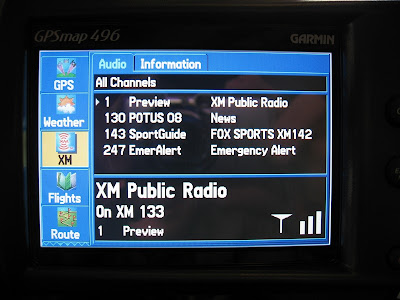
The RV-4 is ready to go after being down for so long.

We flew to Casa Grande for some cheaper fuel (4.17) versus >5.00 and then to Marana Regional for lunch and then back to Phoenix. Total time about 1.5 hours.
Dynon tries to preserve your settings when you send a unit back, but with mine all of the settings were wiped out so I have to reprogram then because I had not downloaded them to a laptop yet as Dynon suggests. I will definately do that when I get everything reprofiled.
Everything went well. It was really neat to see the TAS, density altitude and relative winds aloft on the Dynons. It felt very strange to fly with the digital readouts instead of analog gauges. Its going to take some time for us to get comfortable with the new setup. One thing that the Dynon EMS showed us was a 60 degree difference between our hottest and coolest cylinder in flight. We will have to redo the baffles to try to get the temperatures evened out.
The VP-100 worked great. It showed about 6 amps being used with all normal daytime avionics powered up in flight including strobes.

This week I will work on recalibrating everything for the Dynons again and making backups so I can restore the settings in the future if needed. I am also ordering the backup battery from Dynon for the EFIS. This coming weekend RV4chick will finally get to fly her RV-4 after all of the changes I made to it and I can get back to finishing the other RV-4 I am currently building. Hope she likes it.









